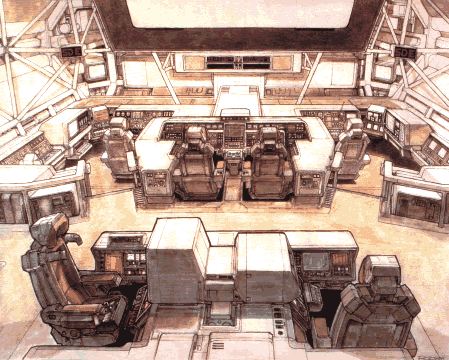
SPLIT-LEVEL BRIDGE.
Felt tip pen. A wide-angle look at Ron Cobb's first bridge design, one he affectionately called California Split-Level. There were to be both giant video screens and two large viewing bubbles that would also feature computer readouts. On final approach these view ports, normally covered by protective shells, would open like giant eyes. This would enable four crew members to monitor the landing from gimbal-mounted seats with the aid of the computerised 'heads-up' displays. In the central, elevated area of the bridge, the ship's officers determine the overall course and position of the ship, their only visual aid an elaborate multi-screen display of computer data.
The proposed set was deemed far too expensive, and only the wing seats shown here survived in the finished film.
WINDOWLESS BRIDGE.
Felt tip pen, ink & acrylic. This more refined version of the earthship control bridge - enclosed and windowless - has a large video screen displaying data from outside. It incorporates the stark, utilitarian look of the bridge of a supertanker.
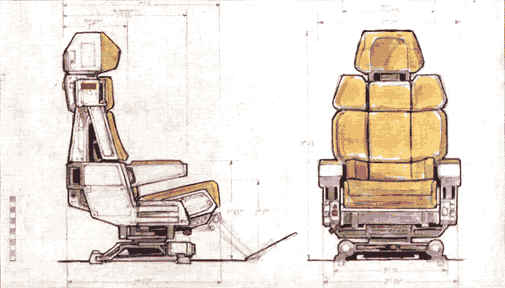
NOSTROMO CREW SEAT.
Felt tip pen. Side, front and back of the standard crew seat.
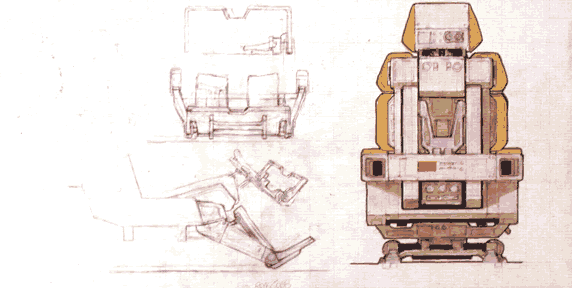
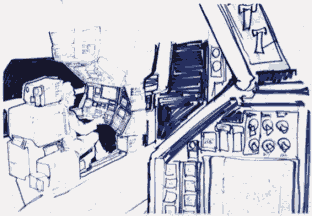
A rough sketch of the left-hand wing seat facing a control console on the bridge.
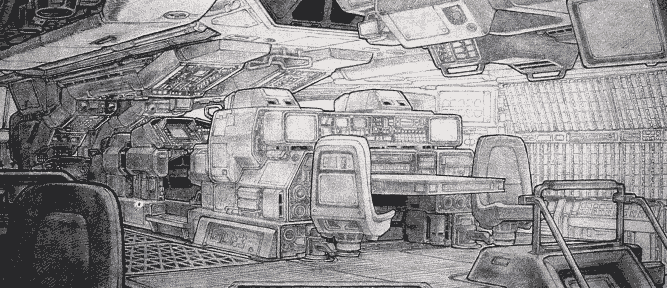
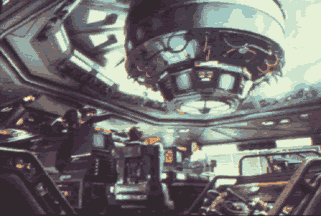
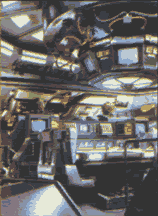
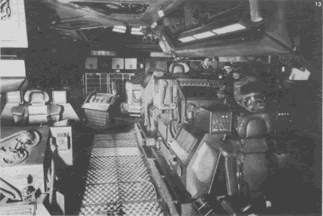
NOSTROMO BRIDGE: REAR.
The rear of the bridge is very close to the final Cobb sketch as seen above.
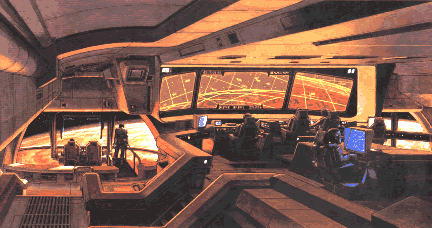
BRIDGE.
Pencil. A rendering of the rear section of the Nostromo bridge, with the cramped and cluttered look of a B-52 bomber interior. This was the final design.
RON COBB: My first version of the bridge was very spacious indeed; sort of split-level, California style with these huge windows. I had this idea for a spectacular shot where you'd see the approaching planet rolling by on console screens, and then suddenly the windows would open and light would flood in and there would be the actual planet outside doing the same roll as the one on the screen. But it was decided that we could'nt afford it, and we'd have to go to a Star Trek bridge with no windows and a viewing screen.